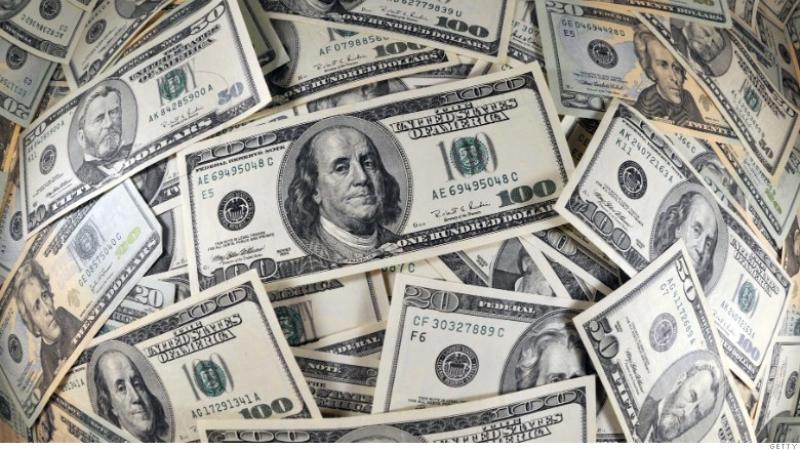If Things Go Well I Win, If Things Go Poorly You Lose.


I was listening to Stephanie Ruhle show just now, and she had a guest , whose name unfortunately I did not catch, who was making an interesting point.
When millions of people lose their jobs, which will happen if the economy does not immediately bounce back once the virus ends and restrictions are lifted, the "business" community will say "there is nothing we can do", and that is how our economic system works.
Ruhle's guest wondered why cruise lines will be bailed out. If capitalism requires unemployment to protect profit for the business, why doesnt it require the cruise lines to go under? Not the cruise industry, which will come back, but these particular cruise lines. The ships won't disappear, they can be used by new companies that will go forward.
The guests larger point is that big business and it's investors want to be protected from dire consequences, but doesnt care if their workers are protected from dire consequences.
This is the "If Things Go Well I Win, If Things Go Poorly You Lose" way of doing things.
Why shouldnt wealthy investors lose their money for the same reason hourly workers often lose their jobs? - because it is the way capitalism works.




Some people are talking about a sea change coming about income inequality after this crisis.
Why shouldnt wealthy investors lose their money for the same reason hourly workers often lose their jobs?
The answer to that question is investors DO lose their money when things go bad! Exhibit A : $6 Trillion was lost in the Stock Market in one week!
Basic Economics, John.
I doubt the cruise industry will need to be bailed out. Their investors and any lenders will just have to write this one off and weather the storm. What are they going to do repossess the ships, who are they going to sell them to? The cruise industry knows how to run that business and there's nobody else who can get it back up and running and making profits faster that the people who are in charge right now. It's not like they ran it into the ground or it was unprofitable it's all because of this Virus so there's no reason to liquidate an industry that is viable so once this is over they'll restart and rebuild their business. I'll bet there'll be some real good deals on cruises when they first restart so if anyone has ever wanted to go on a cruise it might just be the best time to do it at a fantastic price (not to mention the boats might not be full at first so less crowds).
Operative "Word".
loan
[lōn]
NOUN
1. a thing that is borrowed, especially a sum of money that is expected to be paid back.
Everyone seems to be thinking that normal economics are valid during extraordinary circumstances. What has happened wasn't caused by any sort economic change. The financial experts are attempting to use a playbook that addresses the wrong problems. And politicians are attempting to use a playbook that doesn't address reality. What we have are expert profiteers and pirates trying desperately to enrich themselves.
The United States has not been a capitalist economy since before World War I. The United States is a monetarist economy. The problem with 19th century capitalism was that the natural counterbalance to inflation was deflation. Panics (recessions) caused deflation; prices fell and the value of money (buying power) increased. The value of money was pegged to a gold standard so it wasn't possible to expand the money supply without increasing the supply of gold. Scarce dollars chasing abundant resources caused prices to fall (deflation) which made existing debt more expensive. In modern terms, lenders took a haircut by depreciation of collateral; lenders couldn't get their money back. People aren't going to repay loans when the price of their collateral is falling.
Monetary economics protects prices and inflation. While that does protect profits to some extent, an economic contraction will reduce consumption and consequent profits. Businesses are not as profitable during a recession which results in labor force reductions. But prices remain unchanged and lenders are protected because collateral underwriting loans maintains its price. Monetary economics protects the value of debt.
During the pandemic we have seen middlemen profiteers in action. Profiteers have introduced exorbitant inflation into the marketplace. But that inflated price isn't sustainable. Monetarists would flood the economy with money to make those inflated prices the new normal and protect the value of debt created to pay those inflated prices. The suppliers being exploited by profiteers would eventually be required to increase their wholesale prices because the buying power of money has decreased. Abundant dollars (pumped into the money supply) chasing scarce resources causes inflation and reduces the buying power of money.
Don't blame capitalism for the problems caused by monetary economics. And don't blame profit seeking businesses for the exploitation by profiteers. The United States is not a capitalist economy any longer. The United States is an economy that favors pirates, not capitalists.